For those of you that either work for service providers or leverage a VSPC enabled Veeam Cloud Connect one of the options is to leverage VSPC to automate the upgrade of one or more Veeam Backup & Replication to the latest version. This is a great use case for a distributed organizations with multiple VBRs.
If you are a end customer you will need to work with your service provider to gain access to VSPC for this process.
- Once you login navigate to Computers and Backup Servers. Once you select your VBR(s) you can choose Manage Updates\Upgrade Server.

- In the first step of the wizard I recommend that you keep the default of downloading directly from a Veeam server. Do make sure that any and all servers have at least 3x the ISO size free on the system disk to allow for download and working space.
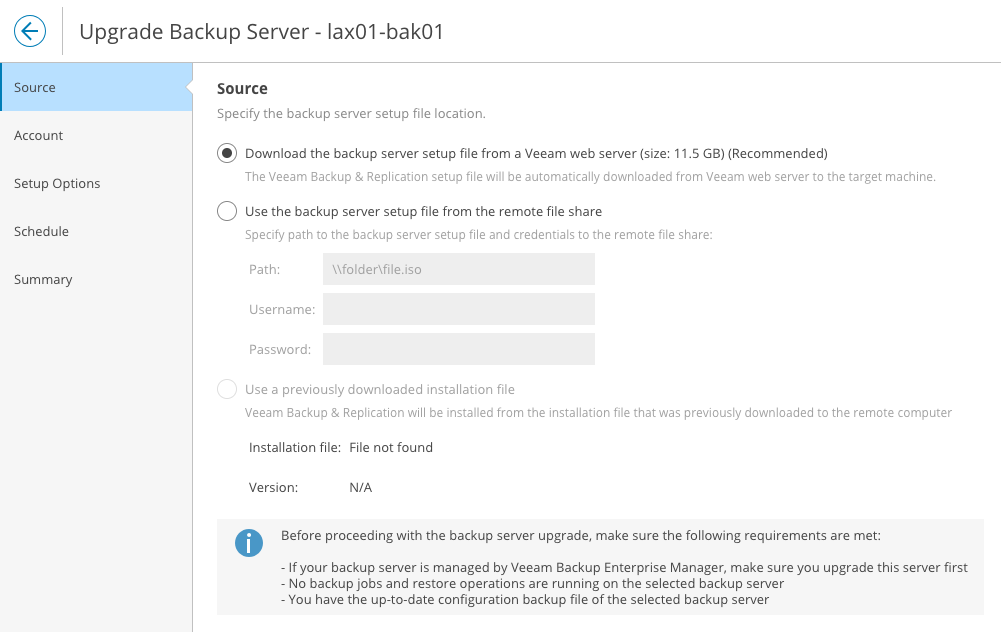
- As of VSPC 8.1 Veeam will allow for saving credentials for future upgrade use but at least for this version you still have to actively provide credentials that the management agent can use to interact with the destination server. You can check the box to have those be saved so this will be automated in future upgrades.
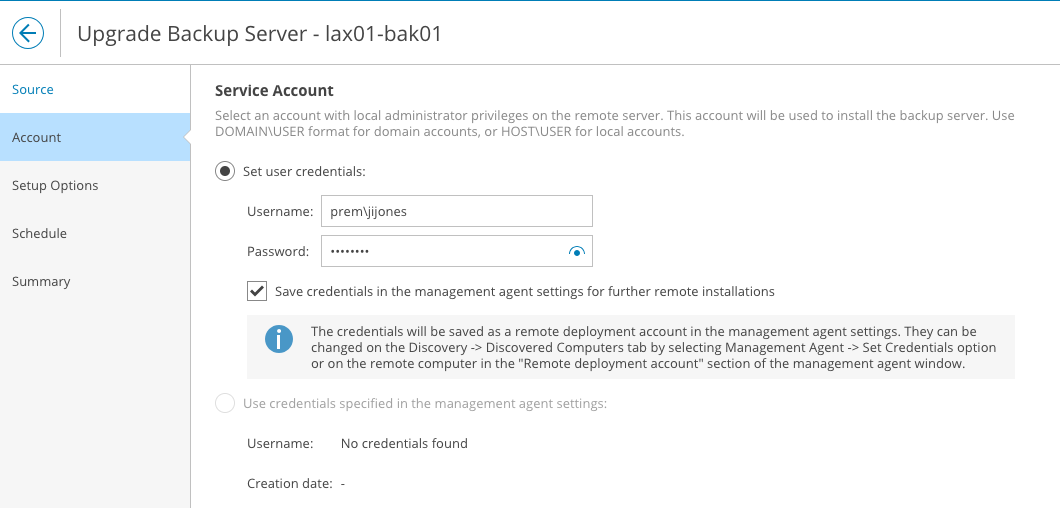
- Next you have to supply a configuration file that the installer can look to for answers. Veeam does provide a sample there as a starter but you WILL have to modify it to be able to successfully upgrade. For a simple installation all you’ll have to do is sign off on all the check boxes for EULA, licensing, etc.
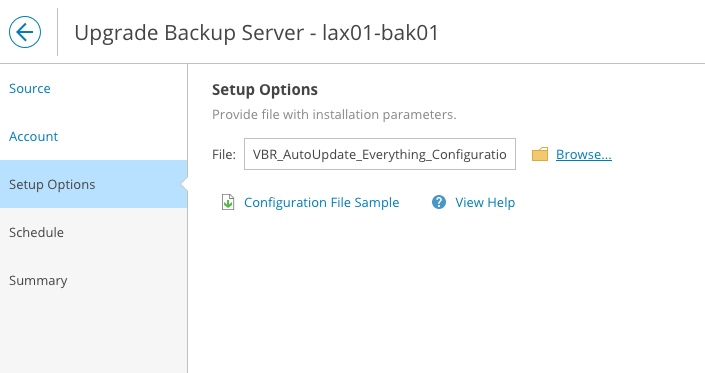
Here is an example of what a simple, good configuration file looks like. I’ll add that I don’t love, especially in the case of an upgrade, that you have to put passwords for the database and system in here if you are running VBR as a named user or have the DB off box but it is what it is for now.
<?xml version="1.0" encoding="utf-8"?>
<unattendedInstallationConfiguration bundle="Vbr" mode="upgrade" version="1.0">
<!--[Required] Parameter 'mode' defines installation mode that silent install should operate in-->
<!--Supported values: install/upgrade/uninstall--><!--Note: unused [Optional] parameters should be removed from the answer file--><properties><!--License agreements-->
<!--Specify parameters to accept all the license agreements during silent installation or upgrade--><!--[Required] Parameter ACCEPT_EULA specifies if you want to accept the Veeam license agreement. Specify '1' to accept the license agreement and proceed with installation or upgrade-->
<!--Supported values: 0/1-->
<property name="ACCEPT_EULA" value="1" /><!--[Required] Parameter ACCEPT_LICENSING_POLICY specifies if you want to accept Veeam licensing policy. Specify '1' to accept the licensing policy and proceed with installation or upgrade-->
<!--Supported values: 0/1-->
<property name="ACCEPT_LICENSING_POLICY" value="1" /><!--[Required] Parameter ACCEPT_THIRDPARTY_LICENSES specifies if you want to accept all the 3rd party licenses used. Specify '1' to accept the license agreements and proceed with installation or upgrade-->
<!--Supported values: 0/1-->
<property name="ACCEPT_THIRDPARTY_LICENSES" value="1" /><!--[Required] Parameter ACCEPT_REQUIRED_SOFTWARE specifies if you want to accept all the required software licenses. Specify '1' to accept the license agreements and proceed with installation or upgrade-->
<!--Supported values: 0/1-->
<property name="ACCEPT_REQUIRED_SOFTWARE" value="1" /><!--License file-->
<!--Specify path to a license file and autoupdate option--><!--[Optional] Parameter VBR_LICENSE_FILE specifies a full path to the license file. If you do not specify this parameter(or leave it empty value), Veeam Backup & Replication will be installed using current license file. To install Community Edition it must be set to 0-->
<!--Supported values: file path/0(to install CE)-->
<!--property name="VBR_LICENSE_FILE" value="" /--><!--[Optional] Parameter VBR_LICENSE_AUTOUPDATE specifies if you want to update license automatically(enables usage reporting). If you do not specify this parameter, autoupdate will be enabled. For Community Edition, NFR and Evaluation licenses it must be set to 1. For licenses without license ID information it must be set to 0-->
<!--Supported values: 0/1-->
<property name="VBR_LICENSE_AUTOUPDATE" value="1" /><!--Service account--><!--[Optional] Parameter VBR_SERVICE_PASSWORD specifies a password for the account under which the Veeam Backup Service is running. Required during upgrade if service account is not LocalSystem account-->
<!--Make sure you keep the answer file in a safe location whenever service account password is added to the answer file-->
<!--Supported values: password in plain text-->
<!--property name="VBR_SERVICE_PASSWORD" value="" hidden="1"/--><!--Database configuration-->
<!--Specify database server installation options and required configuration parameters for Veeam Backup & Replication database--><!--[Optional] Parameter VBR_SQLSERVER_PASSWORD specifies a password to connect to the SQL server in the native authentication mode-->
<!--Make sure you keep the answer file in a safe location whenever SQL server account password is added to the answer file-->
<!--Supported values: password in plain text-->
<!--property name="VBR_SQLSERVER_PASSWORD" value="" hidden="1"/--><!--Automatic update settings-->
<!--Specify Veeam B&R autoupdate settings--><!--[Optional] Parameter VBR_AUTO_UPGRADE specifies if you want Veeam Backup & Replication to automatically upgrade existing components in the backup infrastructure. If you do not specify this parameter, Veeam Backup & Replication will not upgrade out of date components automatically-->
<!--Supported values: 0/1-->
<property name="VBR_AUTO_UPGRADE" value="1" /></properties>
</unattendedInstallationConfiguration> - Once the answer file is supplied you can choose to upgrade now or schedule it. I would recommend checking both the boxes to aid in success.
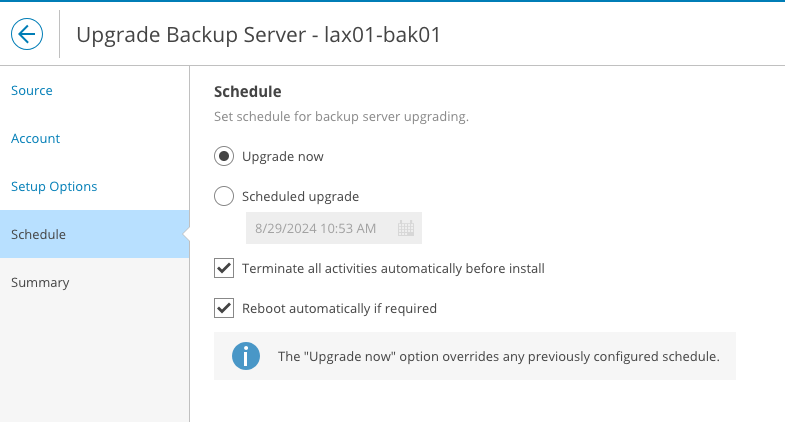
- Finally review the summary and submit the upgrade.
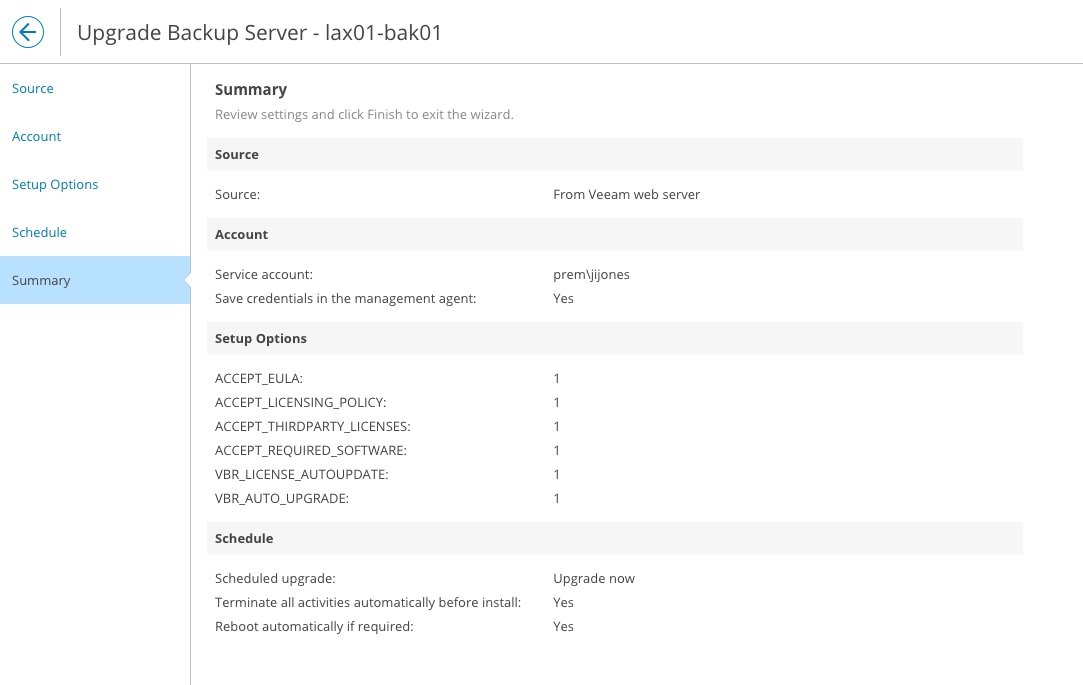
- Hopefully if all goes well you should get a successful return for the upgrade.
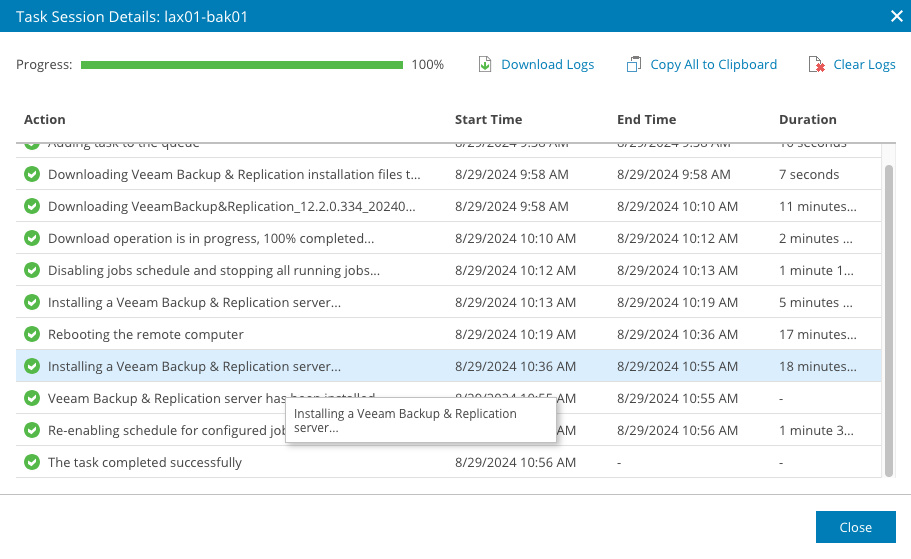
I hope that this helps you in seeing that automation of upgrades is possible even with WYSIWIG Veeam available tools. There is also a workflow here for doing this with patches which is even simpler.



